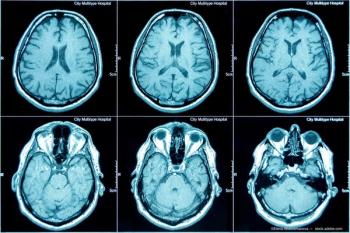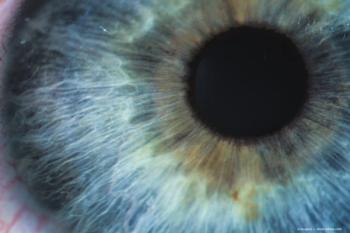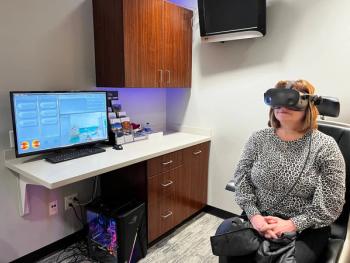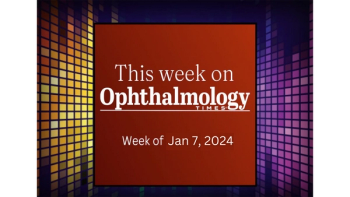
Kamuvudines are a new class of inflammasome inhibitor drugs as therapies for prevalent, degenerative diseases. The trial is evaluating SOM-401 (K8), a derivative of a nucleoside reverse transcriptase inhibitor.

Kamuvudines are a new class of inflammasome inhibitor drugs as therapies for prevalent, degenerative diseases. The trial is evaluating SOM-401 (K8), a derivative of a nucleoside reverse transcriptase inhibitor.

Legislators in New Hampshire, Missouri, West Virginia are among states considering amendments to the regulation of optometry.

Bonnie An Henderson, MD, previews the EnVision Summit 2024, scheduled for February 16 to 19 in Puerto Rico, highlighting its family friendly atmosphere, diverse specialty coverage, and new sessions on leadership and health equity.

Consensus, awareness, and a CVI registry: top priorities of the trans-NIH event

Allen Ho, MD, FACS, FASRS, will make a presentation at the meeting, to be held virtually on February 3.

According to the company, ABBV-RGX-314 continues to be well tolerated in over 100 patients from three dose levels with no drug-related serious adverse events. The new data was presented at the Hawaiian Eye and Retina meeting in Maui, by John Pitcher, MD, and includes 6-month results from two additional dose level 3 cohorts.

Swiss Ophthalmology Innovation (Sophi) is a phaco technology providing mobility, simplicity, and safety within the operating field.

TRS01 ophthalmic solution is targeted for the treatment of non-infectious uveitis, including uveitic glaucoma.


Roger A. Goldberg, MD, MBA, presents a post hoc analysis of the Phase 2/3 PHOTON trial, offering insights into the potential benefits of 8 mg aflibercept in managing fluid reaccumulation, particularly in cases of diabetic macular edema.

Patients are encouraged to choose the optimal technology for their particular situation.

A collaborative study between the Max Planck Institute of Psychiatry and the University of California, Irvine, explores the potential of pupillometry as a clinical test for identifying a specific subgroup of patients with major depressive disorder (MDD) characterized by anticipatory hypo-arousal related to anhedonia.

Principle findings showed that aflibercept 8 mg demonstrated similar improvements in BCVA and CST when compared to the 2 mg dose of aflibercept.

David A. Eichenbaum, MD, discusses the promising aspects of gene augmentation for treating common retinal diseases, addresses concerns about perpetual protein production, and considers the potential positive impact on patients by reducing treatment burdens.

David Eichenbaum, MD, discussed the status of the technology at the Retina 2024 meeting in Maui.

Glenn J. Jaffe, MD, discusses the multifactorial complexities of treating patients with geographic atrophy.

NIDEK Co. Ltd. has made a financial donation to Orbis International to support Orbis’s artificial intelligence (AI)-based screening services in Vietnam.

According to the company, MicroPine, currently in late phase III for pediatric progressive myopia, will complement Eyenovia’s commercial-stage asset, Mydcombi, as well as its pre-PDUFA candidate, APP13007.

The Annual Gala will be held on February 8 from 6 to 9 pm Pacific Standard Time.

David Hutton of Ophthalmology Times talks with Eric Donnenfeld, MD about his presentation "Small Aperture IOL for Irregular Corneas" at this year's Hawaiian Eye and Retina 2024 Meeting.

According to the Advanced Research Projects Agency for Health, its program aims to transplant human eyes and reestablish visual connection to the brain.

Patient selection is important.

David Hutton of Ophthalmology Times talks with William Trattler, MD, about his presentation "Toric IOL pearls for Correcting Lower Levels of Astigmatism" at this year's Hawaiian Eye and Retina 2024 Meeting.

Varun Chaudhary, MD, FRCSC, addressed the big questions in treating patients with retinal vascular diseases at the Retina 2024 meeting in Maui.

GreenMan app provides patients an opportunity to test drive various IOL options before cataract surgery via virtual and augmented reality.

The first step in management is increasing the time spent outside

The goal is to understand how individuals with CVI interact with their visual world


Vascular compromise is the most ominous early adverse event that can occur when a filler is unintentionally injected into a blood vessel.

David Hutton of Ophthalmology Times talks with Andrew Lee, MD, about his presentation "Neuro op mimics of thyroid eye disease" at this year's Hawaiian Eye and Retina 2024 Meeting.